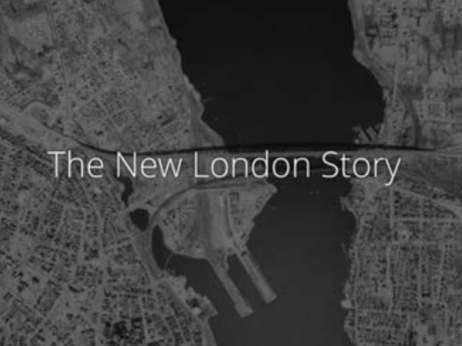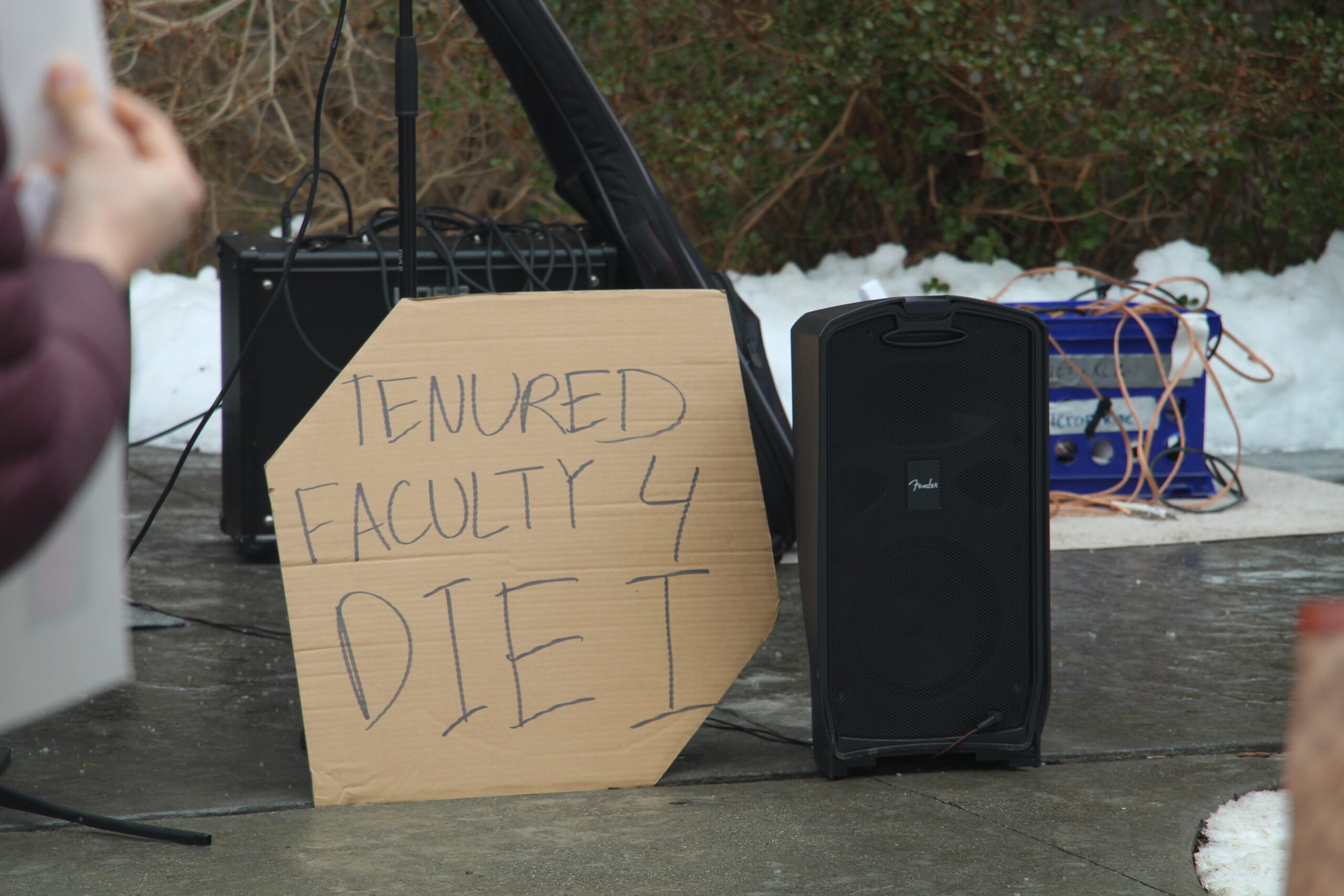Image courtesy of “Mapping Urban Renewal in New London: 1941-1975.”
An assortment of research completed by Connecticut College students for Professor of Architectural Studies and Art History Anna Vallye’s fall 2019 taught seminar “Urban Renewal In America” has been published by the New London County Historical Society. Edited by Vallye herself, the book Urban Renewal and Highway Construction in New London, 1941-1975 details major changes in city infrastructure and their roots.
The book tracks New London’s infrastructure following the city’s acquisition of over $12 million dollars as a part of the total $13 billion dollars eventually given out to municipalities through the United States Housing Act of 1949. The Housing Act of 1949 was passed as an effort to address the influx of people moving from cities to suburbs because of greater access to automobiles following World War II. In New London specifically, the money allowed for pre-existing narrow cobblestone roads meant for horses and carriages to transform into new highways and bridges. While undoubtedly necessary from a practical standpoint for the greater population of automobiles on the road, the renovations were also controversial because of the “slum” areas targeted for renovation, which displaced many New London families who never received proper compensation.
An expert in urban planning, Vallye was immediately fascinated by the history of New London, and specifically, the transformation of the city when she first arrived on campus roughly five years ago. With the help of colleague Rose Oliveira, formerly a librarian at the Connecticut College Linda Lear Center for Special Collections and Archives, Vallye and Oliveira discovered a research grant through the nonprofit Council of Independent Colleges to fund “a collaborative faculty-student-staff research project that highlighted the rich archival resources of local institutions and served the community.”
Eve O’Brien ‘21, who had previously taken a course with Vallye, received an email from Vallye asking if she would be interested in a summer archival research internship. O’Brien responded yes, and she and Vallye worked together to secure O’Brien funding for the internship through Connecticut College’s CONNSSHARP program. The CONNSSHARP program provides fellowships to Connecticut College sophomores and juniors for “intensive research apprenticeships.”
O’Brien was therefore the first student to participate in the research for the project that would eventually produce a book and illustrative informational website detailing the urban renewal project in New London. O’Brien’s initial work that summer of 2019 focused mainly on developing a bibliography for the Vallye taught seminar course that following fall, and spending time at the New London library discovering and gathering information from old newspaper clippings using a microfilm reader. O’Brien’s chapter “The Impact of Car Culture on New London’s Redevelopment” is the first chapter in the book and can be read to get a thorough introduction to the Urban Renewal project as a whole, its purpose on a national scale, and how it was implemented in New London specifically.
In the fall of 2019, Vallye taught 18 students in her four-credit seminar course titled “Urban Renewal in America.” It was from this course that the rest of the chapters of the book were written, by students in the class. The nine chapters fell into four main categories: highway vs. renewal; the planning process; demolition, construction, and preservation; and environmental impact.
Sifting through the abundant historical resources made available by The Day allowed Vallye and students to understand the transformation of the city on a nearly “day-by-day” basis. Additionally, The Day shared New London residents’ personal accounts of living through the renewal project with her class. By conducting this thorough research, Vallye and her students were able to understand not only the impact of the construction on an infrastructural level but the social implications as well.
Matthew Baronas ‘21 wrote a chapter titled “A Quest for Efficiency.” His work focused on the gradual construction of the four-lane Thames River Bridge, eventually part of I-95, that connected New London to Groton. Additionally, Baronas looked at the social implications of this construction, a project that forever changed parts of New London, such as Perry’s Pond, a favorite local swimming spot that was filled for the construction of the Thames River Bridge.
“The Mapping Urban Renewal in New London project connected me with the history of our college’s host city, giving me a deeper appreciation for the consequences of infrastructure decisions” shared Baronas. “It was a powerful experience that led me to pursue a career in urban and environmental planning where I hope to advocate for infrastructure that supports the natural environment and brings people together.”
In the semester to follow, spring 2020, Vallye taught another seminar course, called “Mapping Urban Renewal in New London.” The 26 students enrolled would once again conduct research on the effects of urbanization, this time intended for the online public history website titled “Mapping Urban Renewal in New London: 1941-1975”. The website breaks down the urban renewal project, showing the transformation of the city on a year-to-year basis. There is also an Instagram account for the project under the username: CCUrbanRenewal.
For both the book Urban Renewal and Highway Construction in New London, 1941-1975 and the website “Mapping Urban Renewal in New London,” Vallye and her team of student researchers were aided by Connecticut College Professor of Art Andrea Wollensak. Wollensak and her team of student graphic designers played a key role in data visualization, creating easy-to-understand graphics of the gradual transformation of the city as highways, roads, and bridges were built.
Vallye intends to teach the seminar course titled “Mapping Urban Renewal in America” again in the upcoming fall 2022 semester. This course will continue the work to fully understand the effects of this urban renewal project, with an acute focus on the social impacts of the project. “One of the assignments will likely be taking interviews with people who lived through the renewal area in New London and continue to build stories from these interviews with longtime local residents for the website “Mapping Urban Renewal in New London: 1941-1975” said Vallye. The course will be open to all Connecticut College students without the requirement of any prerequisite courses.










